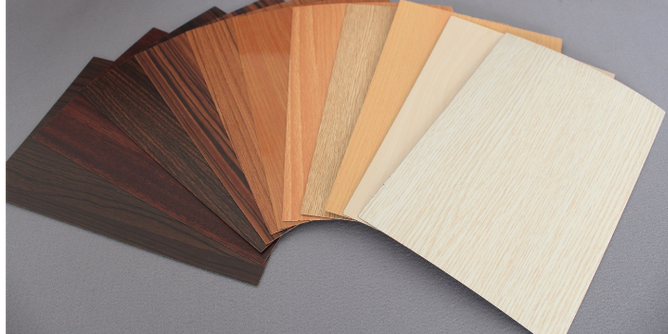When selecting materials for construction or interior design, fire resistance is one of the most critical factors to consider. Two popular fireproof boards in the market are urea glue fireproof boards and phenolic fireproof boards. While both serve to protect against fire hazards, they differ in several aspects, including raw materials, performance, durability, and application suitability. In this detailed guide, we will explore the key differences between urea glue fireproof boards and phenolic fireproof boards to help you make an informed decision.
What is Urea Glue Fireproof Board?
Urea glue fireproof boards are made from urea-formaldehyde resin, a type of adhesive that binds the board together. These boards are commonly used in areas where fire safety is a moderate concern but not a high priority. Urea glue is primarily chosen for its low cost and ease of production. While they do offer basic fireproof properties, they are generally not suitable for high-risk fire situations.
Raw Material Composition
The primary component of a urea glue fireproof board is urea-formaldehyde resin, which is combined with wood fibers or other filler materials. The resin binds the materials together, creating a rigid board that has some resistance to fire. However, urea-formaldehyde as a resin is not known for its high thermal stability or long-lasting heat resistance.
Performance Characteristics
Urea glue fireproof boards have a moderate fire resistance rating. They can withstand some level of heat but are prone to degradation when exposed to high temperatures for extended periods. This makes them more suitable for applications in indoor environments or areas where fire risk is not extreme.
What is Phenolic Fireproof Board?
On the other hand, phenolic fireproof boards are produced using phenolic resin as the binder. This type of board is known for its exceptional fire resistance, heat tolerance, and durability, making it suitable for demanding environments that require high levels of protection. Phenolic resin is often used in applications where heat and fire are constant concerns, such as in industrial settings, chemical plants, or ships.

Raw Material Composition
Phenolic fireproof boards are made by combining phenolic resin with materials such as wood fibers, glass fiber, or other fillers. The resin creates a strong and stable bond, offering enhanced thermal stability compared to urea-based boards. The resulting product can withstand higher temperatures without warping or losing its fire-resistant properties.
Performance Characteristics
Phenolic boards outperform urea glue boards in almost every aspect of fire resistance. They have a high fire resistance rating, meaning they can resist extreme heat and flame exposure for longer periods. This makes them ideal for situations where fire risk is high, such as in commercial buildings, offshore platforms, or heavy industries.
Comparing Fireproof Performance
Urea Glue Fireproof Board Fire Resistance
Urea glue boards are generally less fire-resistant than phenolic boards. While they can prevent fire from spreading in certain conditions, they are not designed to endure prolonged exposure to extreme heat or flames. These boards are suitable for use in areas with low fire risk but may not provide adequate protection in case of a serious fire hazard.
Phenolic Fireproof Board Fire Resistance
Phenolic fireproof boards, in contrast, offer superior fire protection. Their resistant properties make them suitable for environments where fire safety is paramount. Phenolic boards can withstand high temperatures without breaking down, making them a top choice for industrial applications or any scenario where fire protection is critical.
Heat Resistance Comparison
Urea Glue Fireproof Board Heat Resistance
Urea glue fireproof boards are known to have moderate heat resistance. They can withstand heat exposure but tend to deform, crack, or degrade after prolonged exposure to high temperatures. Over time, the adhesive may break down, compromising the overall integrity of the board.
Phenolic Fireproof Board Heat Resistance
Phenolic fireproof boards excel in heat resistance. They remain stable and maintain their structural integrity at higher temperatures. The phenolic resin used in these boards provides outstanding thermal insulation, which helps to prevent heat from transferring and ensures the board's performance even in environments with extreme temperatures.
Water Resistance Comparison
Urea Glue Fireproof Board Water Resistance
One of the major drawbacks of urea glue fireproof boards is their poor water resistance. These boards tend to absorb moisture from the environment, which can cause them to swell, warp, or lose their fireproof qualities. They are not suitable for humid or wet conditions, where their performance would be compromised.
Phenolic Fireproof Board Water Resistance
Phenolic fireproof boards offer excellent water resistance. They are highly durable in moist or humid environments and are less likely to absorb water. This makes phenolic boards the preferred choice for use in areas where moisture exposure is a concern, such as bathrooms, kitchens, or industrial settings with high humidity levels.
Mechanical Strength Comparison
Urea Glue Fireproof Board Mechanical Strength
Urea glue fireproof boards provide moderate mechanical strength. They can handle light loads, making them suitable for residential or low-traffic applications. However, these boards may not be able to withstand significant mechanical stress or impact, and they are typically used in situations where the board's load-bearing capacity is not a critical factor.
Phenolic Fireproof Board Mechanical Strength
Phenolic fireproof boards, on the other hand, offer high mechanical strength. Due to their robust construction and the properties of phenolic resin, these boards are ideal for high-traffic areas or locations that require boards to support heavy loads. Phenolic boards are resistant to impact and can maintain their structural integrity under stress, making them suitable for demanding environments.
Environmental Impact Comparison
Urea Glue Fireproof Board Environmental Impact
One of the primary concerns with urea glue fireproof boards is their environmental impact. The formaldehyde used in the urea resin can emit harmful chemicals, especially in poorly ventilated spaces. While this makes the board less environmentally friendly, modern manufacturing processes have sought to reduce the amount of formaldehyde released. Nonetheless, formaldehyde emissions still remain a significant downside.
Phenolic Fireproof Board Environmental Impact
Phenolic fireproof boards are generally more environmentally friendly. The phenolic resin used in these boards has a lower formaldehyde emission level, making them a better choice for those concerned about indoor air quality. These boards are also more stable in terms of their composition, reducing the risk of releasing toxic substances over time.
Applications and Use Cases
Applications of Urea Glue Fireproof Boards
Urea glue fireproof boards are widely used in interior applications where fire protection is a secondary consideration. They are commonly found in furniture, wall panels, and other decorative items in residential and commercial settings. Their low cost and ease of installation make them a popular choice for general-use applications where high levels of fire protection are not required.
Applications of Phenolic Fireproof Boards
Phenolic fireproof boards, due to their superior fire resistance and durability, are used in high-risk environments. These include industrial facilities, chemical plants, marine vessels, and high-rise buildings. The boards are ideal for applications where fire safety, heat resistance, and moisture resistance are critical, such as in ships, airports, and power stations.
Conclusion: Choosing Between Urea Glue and Phenolic Fireproof Boards
In conclusion, the decision between urea glue fireproof boards and phenolic fireproof boards depends primarily on the specific needs of your project. If you require a board with moderate fire resistance, affordable cost, and easy installation for indoor, low-risk areas, a urea glue fireproof board might be suitable. However, if your project demands high-performance fire resistance, heat stability, water resistance, and mechanical strength, phenolic fireproof boards are the better choice.
Ultimately, understanding the differences between these two types of fireproof boards will help you choose the most appropriate material for your application, ensuring safety and longevity.
English
Русский
العربية
Français
Español
Português
Deutsch
italiano
日本語
한국어
Nederlands
Tiếng Việt
ไทย
Polski
Türkçe
አማርኛ
Bahasa Melayu
தமிழ்
Filipino
Bahasa Indonesia
magyar
Română
Монгол
қазақ
Српски
हिन्दी
فارسی
Kiswahili
Slovenčina
Slovenščina
Svenska
українська
Ελληνικά
Suomi
Հայերեն
עברית
اردو
Shqip
বাংলা
Hrvatski
Afrikaans
Māori
සිංහල
Oʻzbekcha
latviešu
Беларуская мова
Bosanski
Български
ქართული
Lietuvių
Malti
Runasimi



